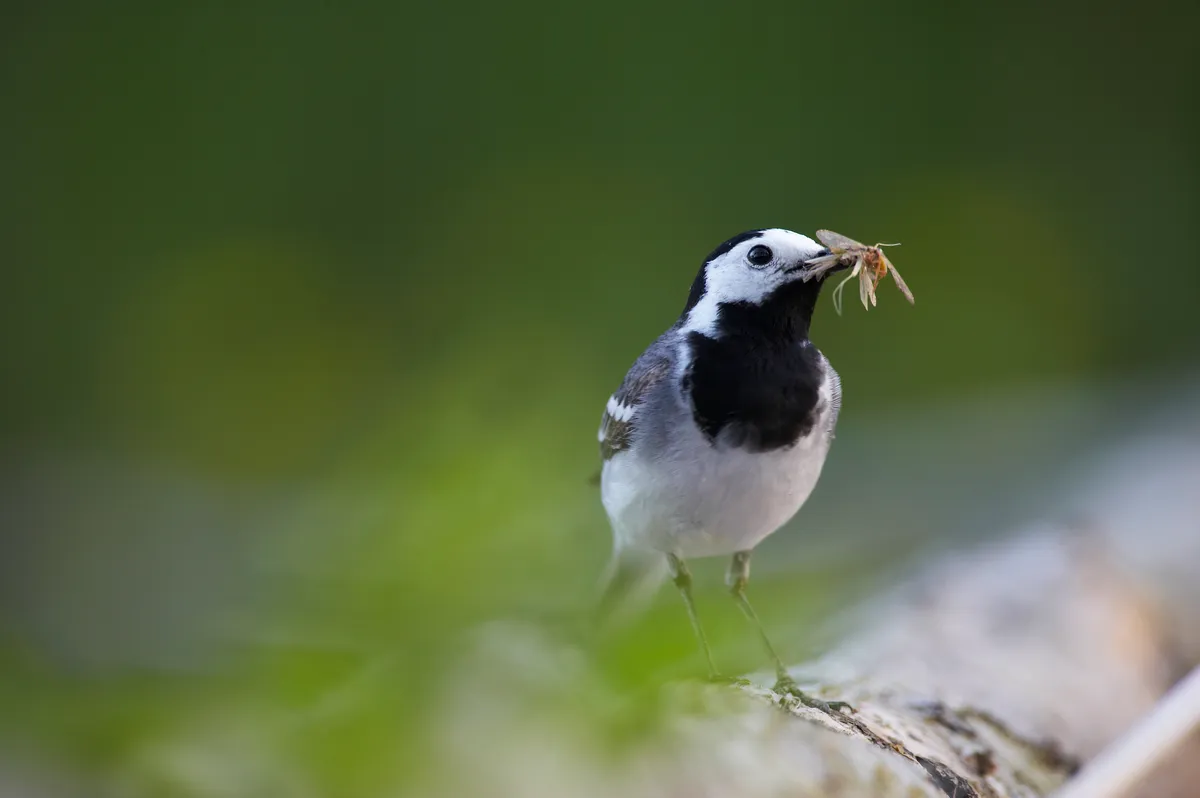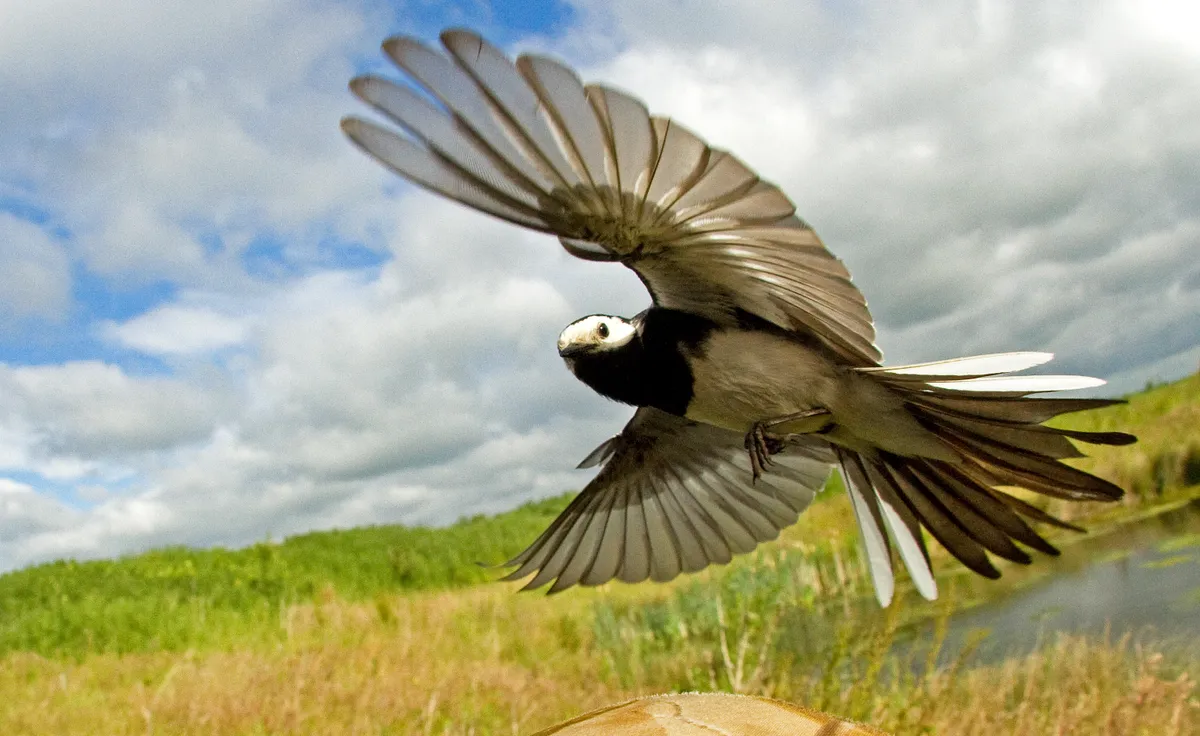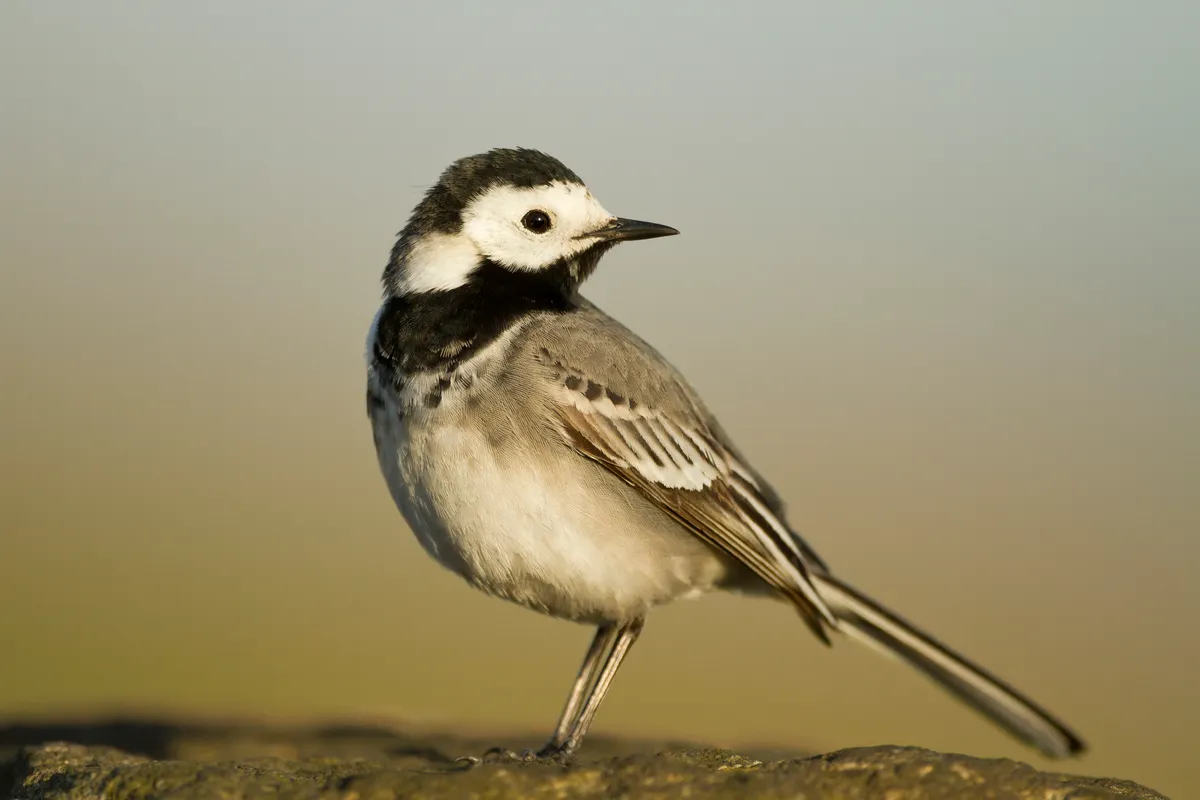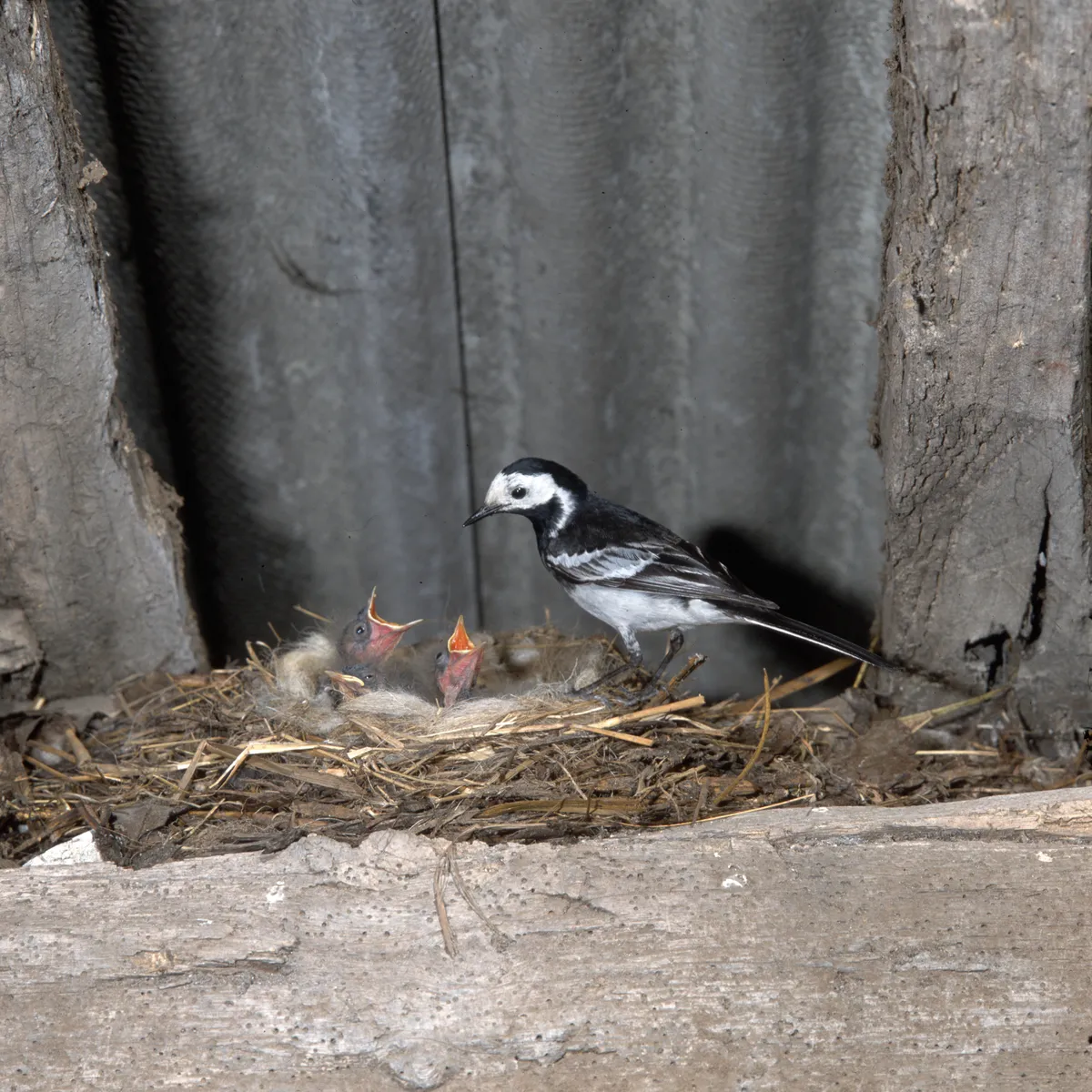Learn more about the pied wagtail in our expert guide, including how to identify, species facts and where to see.
Where does the pied wagtail get its name from?
With its black, white and grey plumage, and a long tail that is constantly wagging, the pied wagtail is aptly named. It is a subspecies of the white wagtail, found in mainland Europe.
What do pied wagtails eat?
Pied wagtails are insectivores, feeding on both ground and aerial invertebrates. Commonly seen on pavements and rooftops, they have been known to search for easy pickings, such as insects in a car radiator grill. In the autumn and winter, when insects are scarce, pied wagtails will come into gardens to feed on seeds and bread.

Why do wagtails wag?
Wagging isn't just unique to the pied wagtail - there are several species that do it. But why do wagtails wag their tails in their first place?
All three of Britain’s breeding wagtails – the pied, grey and yellow – are characterised by their wagging tails, which are frequently ‘pumped’ up and down.
A number of theories have been put forward to explain this behaviour, including the suggestions that tail-wagging helps a bird to capture its insect prey by flushing it out; that it is used to signal social status; and that it indicates an individual’s state of alertness to potential predators nearby.
However, because tail-wagging is also associated with activities such as preening, it is unlikely to be simply a means of flushing prey from cover.
Are pied wagtails territorial?
In the coldest season, adult males have feeding territories. When food is scarce they will defend them vigorously and chase off any intruders. However, if there is plenty of food around, they will let females and first-winter males, but not other adult males, forage nearby. Most of the time, females and first-winter males feed together in flocks.

Where do pied wagtails go in winter?
Most pied wagtails in the UK are resident, but in the winter, pied wagtails that occupy northern upland areas will vacate them and move south. They can migrate as far south as North Africa to escape the cold. Elsewhere in the UK, winter densities are highest in valleys, floodplains and along the south coast. Pied wagtails are also well known for roosting in flocks in urban areas.

Why do pied wagtails roost in city centres?
During the winter, pied wagtails form large roosts at night to keep warm. There is safety in numbers and there have been roosts as large as 4000 individuals recorded. In the countryside, the birds will often roost in reed beds where they are safe from predators.

But this also happens in urban areas, with flocks of pied wagtails roosting communally in city centre trees. These birds are taking advantage of the heat lost from homes, shops and offices, which can lift the ambient temperature to several degrees Celsius above that of the surrounding countryside, a pattern known as the ‘urban heat island effect’. One flock even once found its way into a commercial greenhouse.
The pied wagtail feeds mainly on small invertebrates, which are acutely vulnerable to winter temperatures. This is why much of the northern part of the species’ breeding range within Britain is abandoned outside of the breeding season.
Where do pied wagtails nest?
You might find a pied wagtail nest in a tree hollow or a log pile, but they prefer to nest in holes. Pied wagtails have been known to nest in abandoned machinery, cars, greenhouses, and in one particularly unusual case, the barrel of an 1894 battle cruiser gun.

Are pied wagtails endangered?
Sadly between 1995 and 2010, there was an 11 per cent decline in pied wagtail numbers. A rapid decrease in numbers has been seen along rivers and canals suggesting there is a link with the state of our waterways, though the decrease in invertebrate availability might also play a role.

